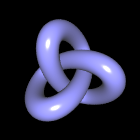I'm afraid you can't see its tail, just its head, eyes, and mouth. So why are they building such a strange structure at Cruz Blanca? To understand you must know a little more of axolotls, which are unusual and interesting creatures.
Axolotl (in Spanish ajolote) is the common name for the species Ambystoma mexicanum, a kind of neotenic
salamander. The 'mexicanum' part of the name derives from 'Mexico' because this animal only existed in Lake Xochimilco and Lake Chalco in the highlands of Mexico surrounding
Teotihuacan (city of the gods) and just to its south the town of Xochimilco (
city of flowers--from
Nahuatl xóchitl = flower; milli = cultivated field, co = place). These lakes were full of axolotls which were a delicious and important food for the people of this region. These cities are ancient and are thought to have originated around 200 years before Christ, and by the 4th century (about the time Ethiopia was Christianised)
Teotihuacan was the sixth largest city in the world.
Now of course the region is the giant megalopolis known as Mexico City and the lakes have long since been drained or dried up with only vestiges remaining as a few canals at Xochimilco, in the southern part of Mexico City. As late as 1911 axolotls were still common in the markets of Mexico City. Whether they are still eaten and still available in markets I don't know, but I am skeptical because axolotls in the wild are now endangered.
As you probably know, each of our cells contains the complete genetic information of our bodies and so, in a sense, each cell contains a plan which if followed would could create a clone of ourselves. Unfortunately however it is only the youthful embryonic stem cells which can actually develop into a full clone, or into various parts of us, say a hand or a heart or skin depending on the environment that cues them. This is why stem cell research is so important, because only the stem cells are (as it is called) pluripotent.
Not so with the axolotl, for not only is it neotenic, that is it never metamorphoses like most salamanders into an adult form, but rather its youthful form including external gills continues into reproductive adulthood and throughout its life; but also its mature cells are pluripotent. Exactly why this is so is not well understood, but this attribute allows the salamander to regenerate lost limbs and other parts of its body.
These, then are the reasons that the axolotl is today important as a research animal in both regenerative medicine and stem cell research.
As a former (and maybe future) pool player I couldn't resist sharing the above diagram, grabbed from somewhere in the vast miasma of the Internet.
So now the reasons for the axolotl at Cruz Blanca emerge: axolotls will be raised for use in medical and pharmaceutical research. I am indebted to Alberto, friend and native speaker of Spanish, for talking to the local people at Cruz Blanca and explaining to me what they said. However, any errors here are mine since this posting is partly suppositional.
One small question. The great naturalist Alexander von Humboldt, for whom I have great regard, reported, as a result of his own exporations around 1803 or 1804, that the axolotl existed in other high altitude Mexican lakes besides the two mentioned above near Mexico City.

Alexander von Humboldt, as painted by Joseph Stieler, 1843
This is apparently not true today and I have not seen any confirming evidence that the salamanders reported by Humboldt in other lakes were in fact axolotls. If you can shed any light on this please comment or contact me.
Finally, on a personal note, I have had a persistent cough for nearly a month now. Happily I can report that a doctor in Xalapa has determined that it is not a contagious malady, and that following his prescriptions I am much better now. Still, though not suggested by my doctor, I cannot help but wonder whether this product,

which I have not yet been able to obtain, might have helped.














